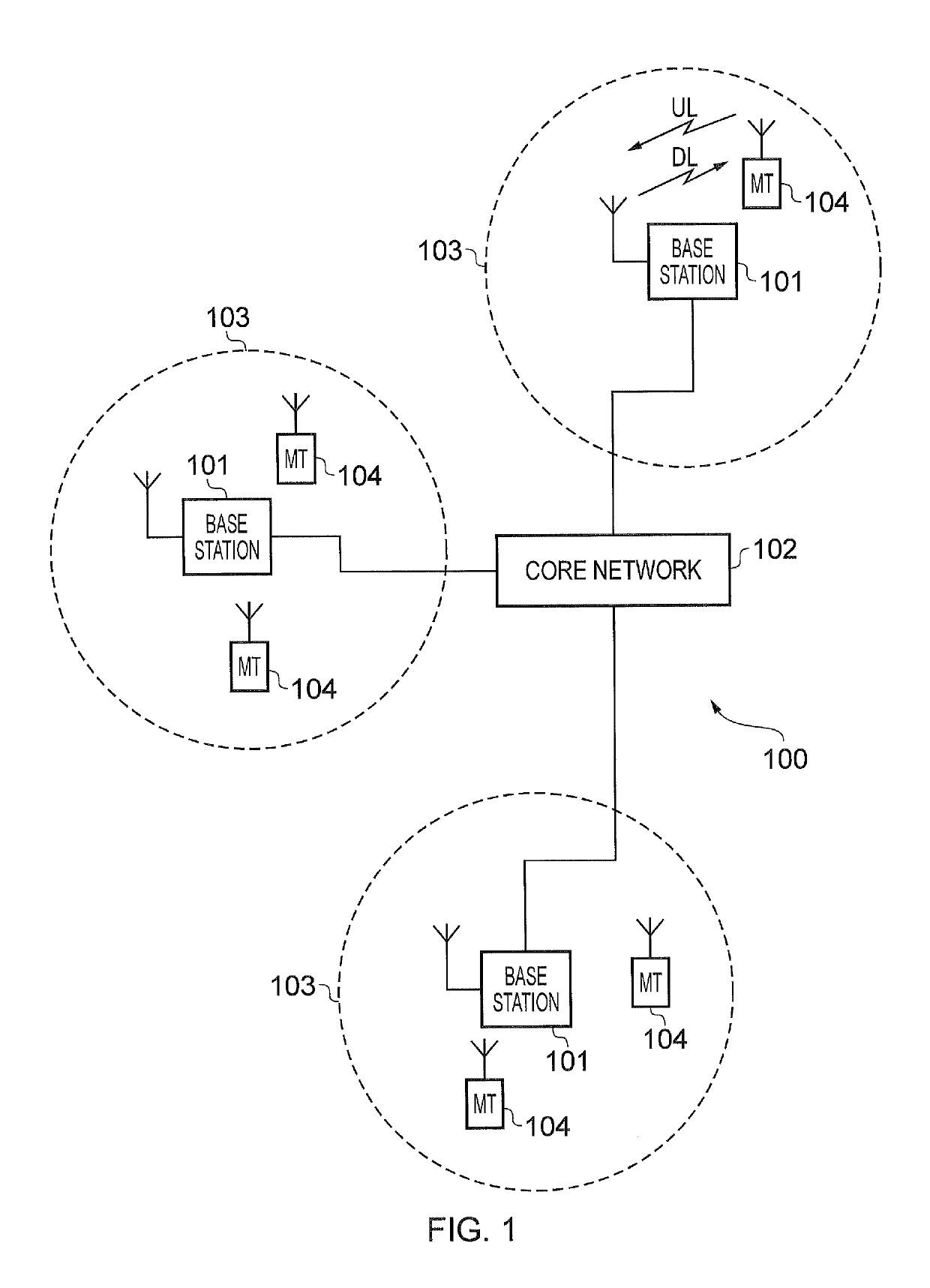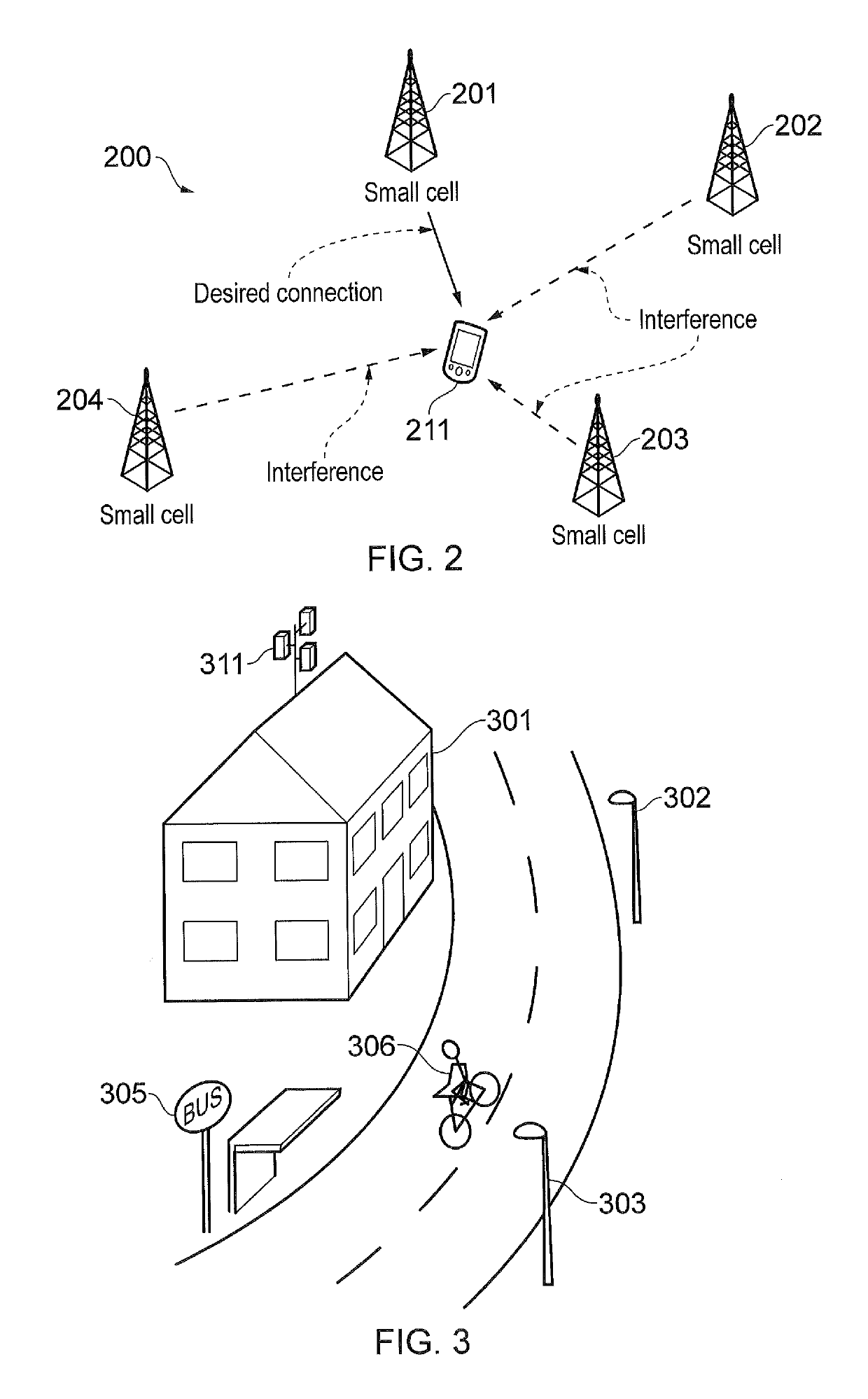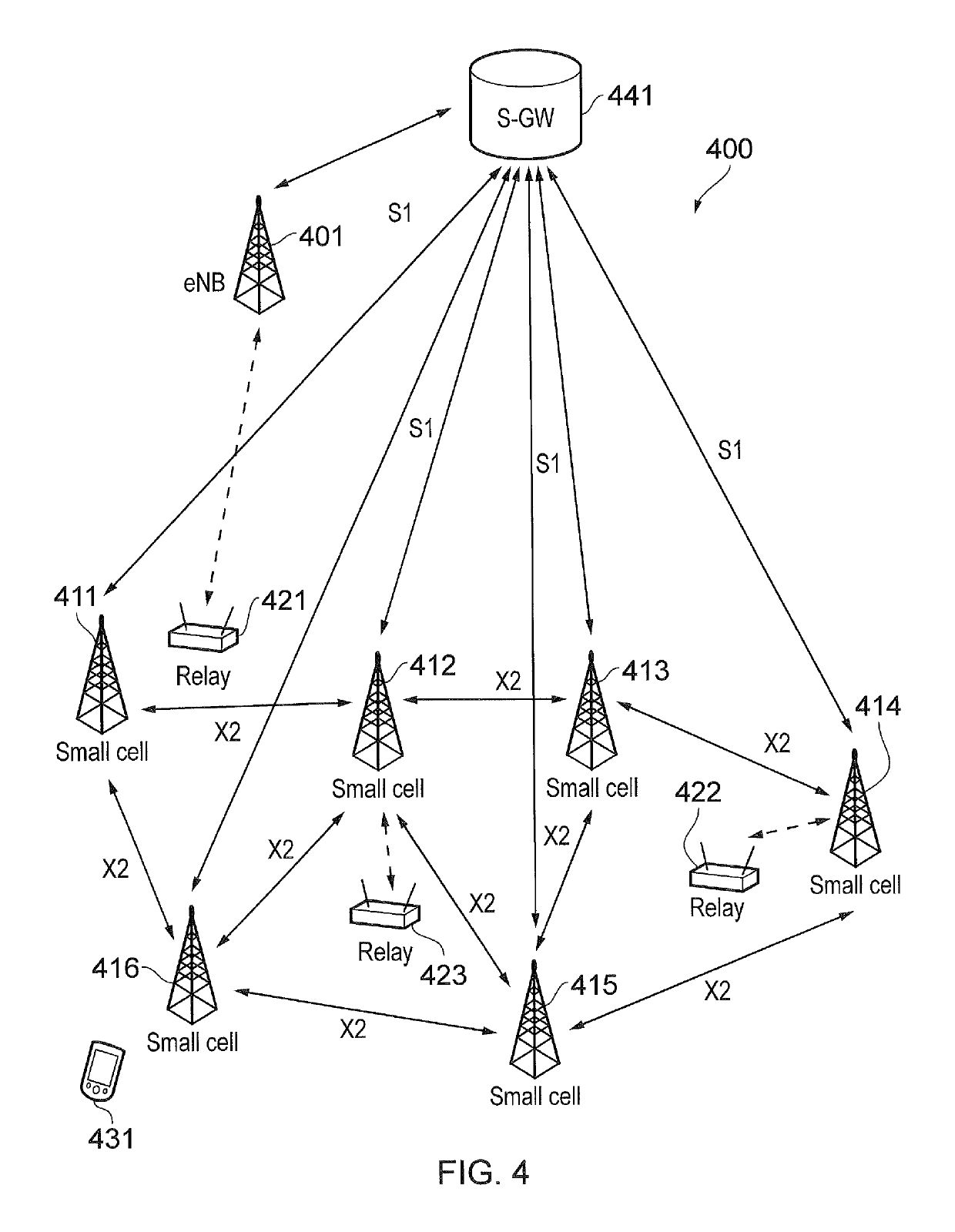Mobile communications network, methods, base station, relay node and communications terminal
a mobile communication network and relay node technology, applied in the field of mobile communications networks, methods, base stations, relay nodes and communications terminals, can solve the problems of relay synchronisation signals not providing any way of a priori, not providing information on any other parts of the radio channel, and the radio channel between the communications terminal and the relay node or the relay node may be very wide, so as to reduce the number of failed transmissions, improve the overall latency of the d2d connection, and reduce the number of failed transmission
- Summary
- Abstract
- Description
- Claims
- Application Information
AI Technical Summary
Benefits of technology
Problems solved by technology
Method used
Image
Examples
Embodiment Construction
[0028]Hereinafter preferred embodiments of the present technique will be described in detail with reference to the appended drawings. Note that, in this specification and appended drawings, structural elements that have substantially the same function and structure are denoted with the same reference numerals, and repeated explanation of these structural elements is omitted.
[0029]FIG. 1 provides a schematic diagram illustrating some basic functionality of a conventional mobile telecommunications network, using for example a 3GPP defined UMTS and / or Long Term Evolution (LTE) architecture. The mobile telecommunications network / system 100 of FIG. 1 operates in accordance with LTE principles and which may be adapted to implement embodiments of the disclosure as described further below. Various elements of FIG. 1 and their respective modes of operation are well-known and defined in the relevant standards administered by the 3GPP® body, and also described in many books on the subject, for...
PUM
 Login to View More
Login to View More Abstract
Description
Claims
Application Information
 Login to View More
Login to View More - R&D
- Intellectual Property
- Life Sciences
- Materials
- Tech Scout
- Unparalleled Data Quality
- Higher Quality Content
- 60% Fewer Hallucinations
Browse by: Latest US Patents, China's latest patents, Technical Efficacy Thesaurus, Application Domain, Technology Topic, Popular Technical Reports.
© 2025 PatSnap. All rights reserved.Legal|Privacy policy|Modern Slavery Act Transparency Statement|Sitemap|About US| Contact US: help@patsnap.com



